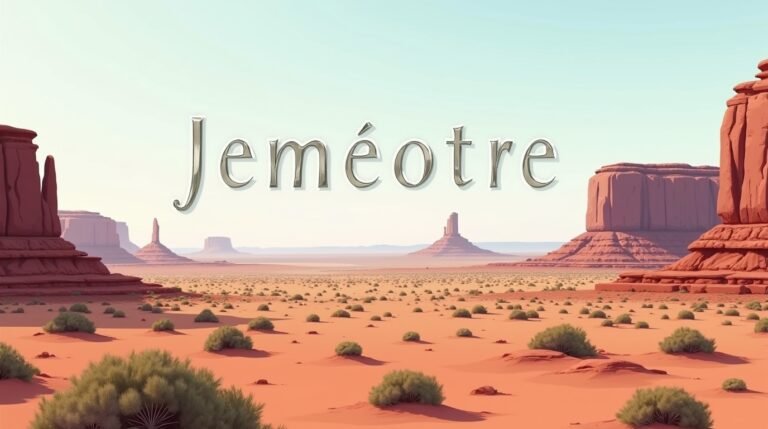Örviri, a concept rooted in ancient traditions, blends spirituality, folklore, and nature. Originating from Norse and indigenous practices, it has served as both a healing ritual and a bridge to ancestral wisdom. Stories describe örviri as a guardian spirit with abilities like telepathy and elemental control, reflecting humanity’s enduring bond with the unseen. Today, as interest in nature-based spirituality grows, örviri resurfaces in modern pagan and occult circles. Yet its mystical claims spark debate: is it a cultural treasure, a psychological tool, or a misunderstood myth? This article explores örviri’s history, practices, and evolving role in a world torn between skepticism and the search for meaning.
Origins and Evolution of Örviri
Historical Roots
Örviri traces its beginnings to early Norse communities and indigenous Northern European tribes, where it functioned as a spiritual framework tied to nature and ancestral veneration. Historical records, including fragmented sagas and carvings, suggest örviri rituals were used to commune with spirits, predict seasonal changes, and seek healing. Artifacts like ceremonial arrows and symbolic carvings hint at its role in divination and rites of passage. Over centuries, the practice spread across Scandinavia, blending with local customs and adapting to shifts in societal structures, particularly during periods of migration and cultural exchange.
Mythological Beginnings
Legends frame örviri as a bridge between humans and the supernatural. Norse myths describe it as a gift from deities linked to earth and sky, granting practitioners abilities like influencing weather or communicating with animals. Stories often depict örviri as a protector of villages, intervening in crises through dreams or omens. In Sami traditions, it intertwines with shamanic practices, where ritualists channeled örviri’s power to mediate between physical and spiritual worlds. These narratives reinforced its identity as both a practical tool and a sacred covenant with nature.

Adaptation and Change
As Christianity spread across Europe, örviri’s overt spiritual practices faded, surviving covertly in rural communities or merging with folk traditions. By the 19th century, scholars began documenting remnants of örviri in regional folklore, often conflated with superstitions about forest spirits or herbal healing. The 20th century saw renewed curiosity, spurred by neo-pagan movements seeking pre-Christian traditions. Modern reinterpretations emphasize örviri’s ecological symbolism, framing it less as a mystical force and more as a metaphor for humanity’s interdependence with natural systems. This evolution reflects its resilience—a concept reshaped by time yet anchored in its ancient roots.
Core Principles and Components of Örviri
Definition and Foundations
Örviri operates as a spiritual system grounded in harmony with nature and ancestral connection. Central to its philosophy is the belief that physical and spiritual worlds intertwine, accessible through ritual and symbolism. Foundational elements include ceremonial tools like arrows, which serve as conduits for divination, and natural materials such as herbs or stones used in healing. These components reflect a worldview where every action holds symbolic weight, bridging human intention with cosmic forces.
Key Practices
Practices vary but share common threads:
- Healing Rituals: Techniques involve channeling energy through touch, herbal remedies, or chants, often guided by intuition or ancestral knowledge.
- Elemental Interaction: Practitioners engage with earth, air, fire, and water, believing these elements embody specific energies to be balanced or harnessed.
- Divination: Arrows, marked with symbols, are cast or drawn to interpret messages from spirits or predict outcomes, a method rooted in ancient Scandinavian traditions.
- Guardianship: Some traditions position örviri as a protective practice, where rituals shield communities or landscapes from harm.
Associated Traditions
Örviri’s principles permeate cultural expressions:
- Folktales: Stories depict örviri as a mediator between humans and nature spirits, often emphasizing moral lessons or ecological respect.
- Music and Dance: Rhythmic drumming or chanting accompanies rituals, believed to alter consciousness and invite spiritual contact.
- Seasonal Ceremonies: Aligned with solstices or harvests, these rites celebrate cyclical natural patterns, reinforcing örviri’s link to environmental cycles.
This framework balances individual intuition with communal tradition, creating a dynamic system adaptable to personal and collective needs.
Cultural Significance and Societal Impact
Folklore and Heritage Preservation
Örviri’s presence in folklore cements its role as a cultural anchor. Stories from Scandinavian and Sami traditions often portray örviri as a mediator between humans and natural forces, such as tales where it guides lost travelers or negotiates with forest spirits during droughts. These narratives, passed orally through generations, preserve ecological wisdom and communal ethics. Museums in Nordic regions now display artifacts like ritual arrows and carved symbols, linking modern audiences to ancestral practices. Seasonal festivals, such as midsummer celebrations, incorporate örviri-inspired rituals, ensuring its motifs remain alive in communal memory.
Modern Spirituality and Nature-Based Practices
Contemporary spiritual movements, particularly neo-pagan and eco-spiritual groups, integrate örviri into their frameworks. Practitioners use its principles to design meditations focused on elemental balance or rituals honoring natural cycles. For example, some eco-villages adopt örviri-inspired ceremonies to bless new gardens, blending tradition with sustainability efforts. This adaptation highlights örviri’s flexibility—its core ethos of nature reverence resonates in contexts addressing climate anxiety and ecological disconnect.
Identity and Community Revival
Among Scandinavian diaspora communities, örviri serves as a touchstone for cultural identity. Workshops on traditional crafts, like carving ritual tools or brewing herbal remedies, foster pride in heritage. In northern Finland, Sami activists incorporate örviri symbolism into language revitalization projects, framing it as part of Indigenous resilience. Academic programs in ethnography and folklore studies increasingly analyze örviri, recognizing its role in shaping regional identities and challenging homogenized historical narratives.
Societal Influence and Artistic Expression
Örviri’s imagery permeates modern art and literature. Norwegian composer Ailo Ravna’s symphony Spirits of the Birch draws on örviri themes, using drum rhythms mimicking ritual chants. Environmental NGOs occasionally reference örviri in campaigns, equating its guardian role with modern conservation ethics. While not as institutionalized as other traditions, its quiet persistence in creative and activist circles underscores a broader societal yearning to reconcile technology with timeless natural wisdom.
Örviri’s legacy lies in its ability to adapt—an ancient practice finding new purpose in dialogues about identity, ecology, and belonging.
Modern Interpretations and Resurgence
Renewed Interest in Ancestral Practices
Örviri has regained attention among neo-pagan groups, occult enthusiasts, and eco-conscious communities. This revival stems from a growing disconnect with industrialized lifestyles, driving individuals toward nature-centric spirituality. Norse pagan networks, for instance, host online forums and seasonal gatherings where örviri rituals are taught alongside rune readings and herbalism. Workshops in Scandinavia and North America blend historical methods with contemporary needs, such as stress-relief meditations inspired by örviri’s guardian rituals.
Adaptations in Practice
Modern iterations often simplify traditional rites for accessibility. Urban practitioners might substitute ceremonial arrows with crafted wands or use digital apps to simulate divination processes. Eco-villages integrate örviri-inspired land blessings into permaculture projects, framing crop rotations as acts of elemental balance. These adaptations highlight örviri’s flexibility, though purists critique deviations from historical accuracy, fearing dilution of its cultural roots.
Benefits and Community Building
Advocates emphasize örviri’s role in fostering mindfulness and ecological awareness. Group rituals, like collective drumming or seasonal offerings, create communal bonds and reinforce connections to natural cycles. For some, practicing örviri offers psychological comfort—a structured way to process uncertainty through symbolic acts, such as interpreting divination results as guides for personal decisions.
Critiques and Ethical Debates
The resurgence sparks debates over cultural ownership. Sami activists caution against commodifying örviri, noting its sacred role in Indigenous heritage. Commercial workshops selling “authentic” örviri kits or online courses sometimes face backlash for oversimplifying its spiritual depth. Skeptics question claims of supernatural efficacy, attributing benefits to placebo effects or the therapeutic nature of ritual itself.
Integration with Technology and Media
While some reject modern tools, others merge örviri with digital platforms. Virtual reality simulations of forest rituals or podcasts discussing örviri’s philosophy attract younger audiences. Social media hashtags like #ÖrviriJourney share personal stories, democratizing access but also fragmenting its traditional communal structure.
Eco-Spiritual Movements
Environmental activists occasionally adopt örviri symbolism to frame conservation as a spiritual duty. Campaigns might liken protecting forests to honoring örviri’s guardian role, blending myth with advocacy. This synergy underscores örviri’s evolving relevance—a bridge between ancient reverence for nature and modern ecological crises.
Örviri’s modern journey reflects a tension between preservation and innovation, revealing how ancient practices can inspire new ways of navigating identity, community, and planetary challenges.
Analyzing Örviri: Perspectives and Debates
Scientific Explanations vs. Mystical Beliefs
Skeptics often attribute örviri’s perceived effects to psychological mechanisms, such as the placebo effect or the calming influence of ritualistic repetition. Studies on meditation and communal rituals suggest structured practices can reduce anxiety, offering a framework to interpret örviri’s therapeutic claims. Conversely, adherents view örviri’s rituals as tapping into unseen energies or ancestral guidance, citing personal experiences of clarity or healing. This divide reflects broader tensions between empirical validation and subjective spiritual encounters.
Respecting Cultural Narratives in Academic Discourse
Scholars face challenges in studying örviri without reducing it to mere folklore or pseudoscience. Anthropologists emphasize contextualizing practices within their cultural frameworks—for instance, interpreting divination as a tool for decision-making rather than superstition. Indigenous scholars advocate collaborative research, where Sami or Nordic voices guide interpretations to prevent misrepresentation. This approach acknowledges örviri as both a cultural artifact and a living tradition, resisting oversimplification.
Addressing Misconceptions and Symbolic Value
Örviri is sometimes conflated with generic “witchcraft” or New Age trends, erasing its specific historical roots. Critics also dismiss it as outdated, ignoring its adaptive role in modern ecology movements. Clarifying these points involves highlighting örviri’s distinct rituals, like arrow divination, and its emphasis on reciprocity with nature. Even skeptics recognize its symbolic power: stories of guardian spirits or elemental balance resonate metaphorically, offering narratives to reimagine humanity’s relationship with the environment.

Ethical Debates and Commercialization
The rise of örviri-themed merchandise, from ritual kits to paid online courses, sparks concerns about cultural commodification. Indigenous groups stress the difference between respectful engagement and profit-driven appropriation, urging outsiders to honor örviri’s sacred origins. Meanwhile, debates persist over whether modern adaptations enrich or erode tradition, as digital platforms spread knowledge but risk fragmenting communal practices.
Bridging Perspectives
Örviri’s debates mirror wider societal struggles to reconcile tradition with progress. While science seeks explanations, and spirituality seeks meaning, örviri occupies a space where both intersect—a testament to humanity’s enduring quest to understand the intangible while grounding itself in cultural continuity.
Conclusion
Örviri’s enduring presence, from ancient Nordic rituals to contemporary eco-spiritual movements, reveals a practice shaped by time yet anchored in reverence for nature and ancestry. Its evolution—marked by adaptation to societal shifts and resistance to erasure—reflects both cultural resilience and humanity’s persistent search for meaning beyond the material. Debates over its legitimacy, commercialization, and cultural ownership underscore broader tensions between tradition and modernity, skepticism and belief. Yet örviri persists, not as a static relic but as a dynamic force, inviting reflection on how ancient wisdom can inform modern challenges. Whether viewed as myth, metaphor, or living tradition, its legacy lies in bridging worlds: past and present, human and natural, tangible and unseen.





